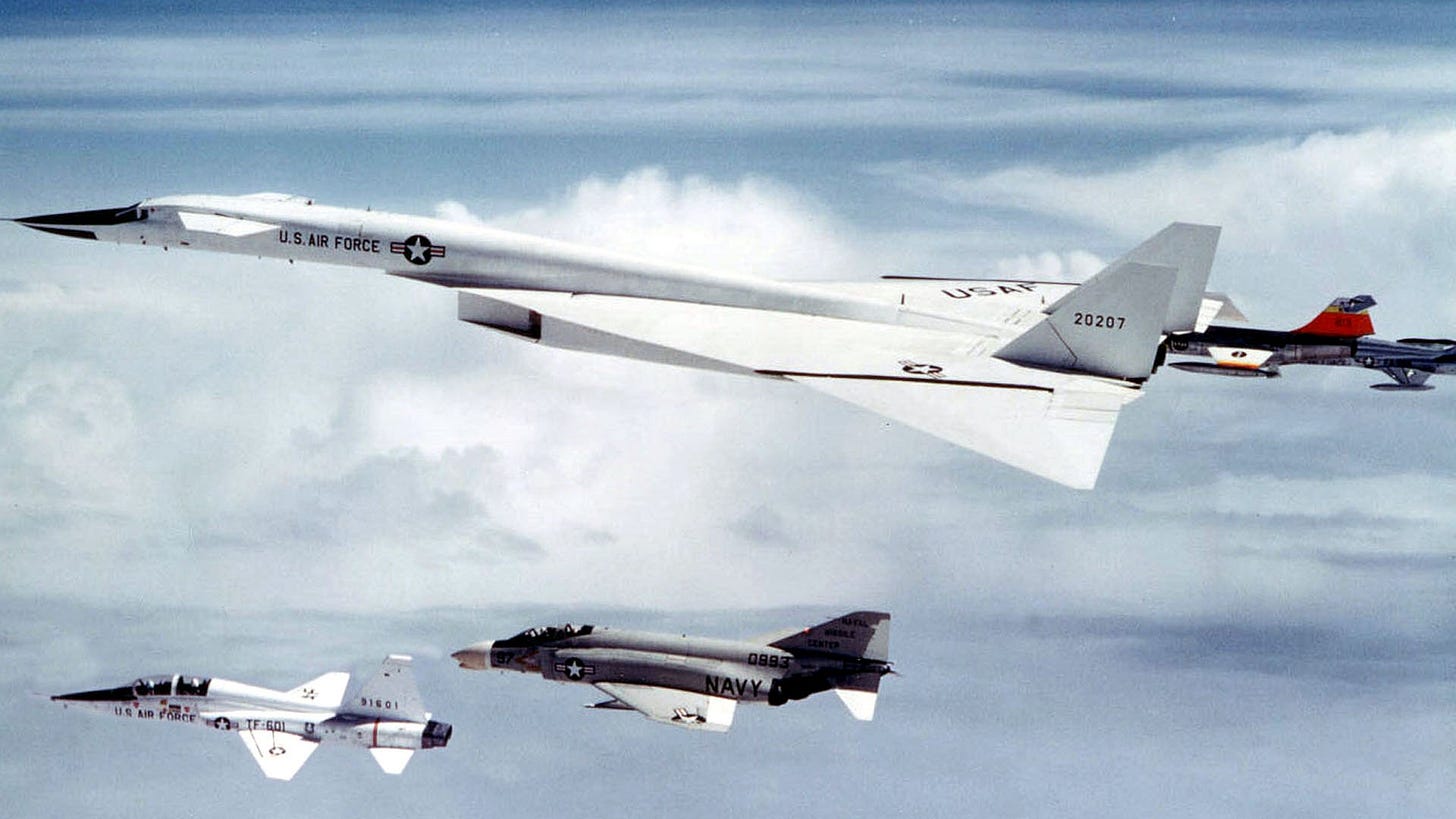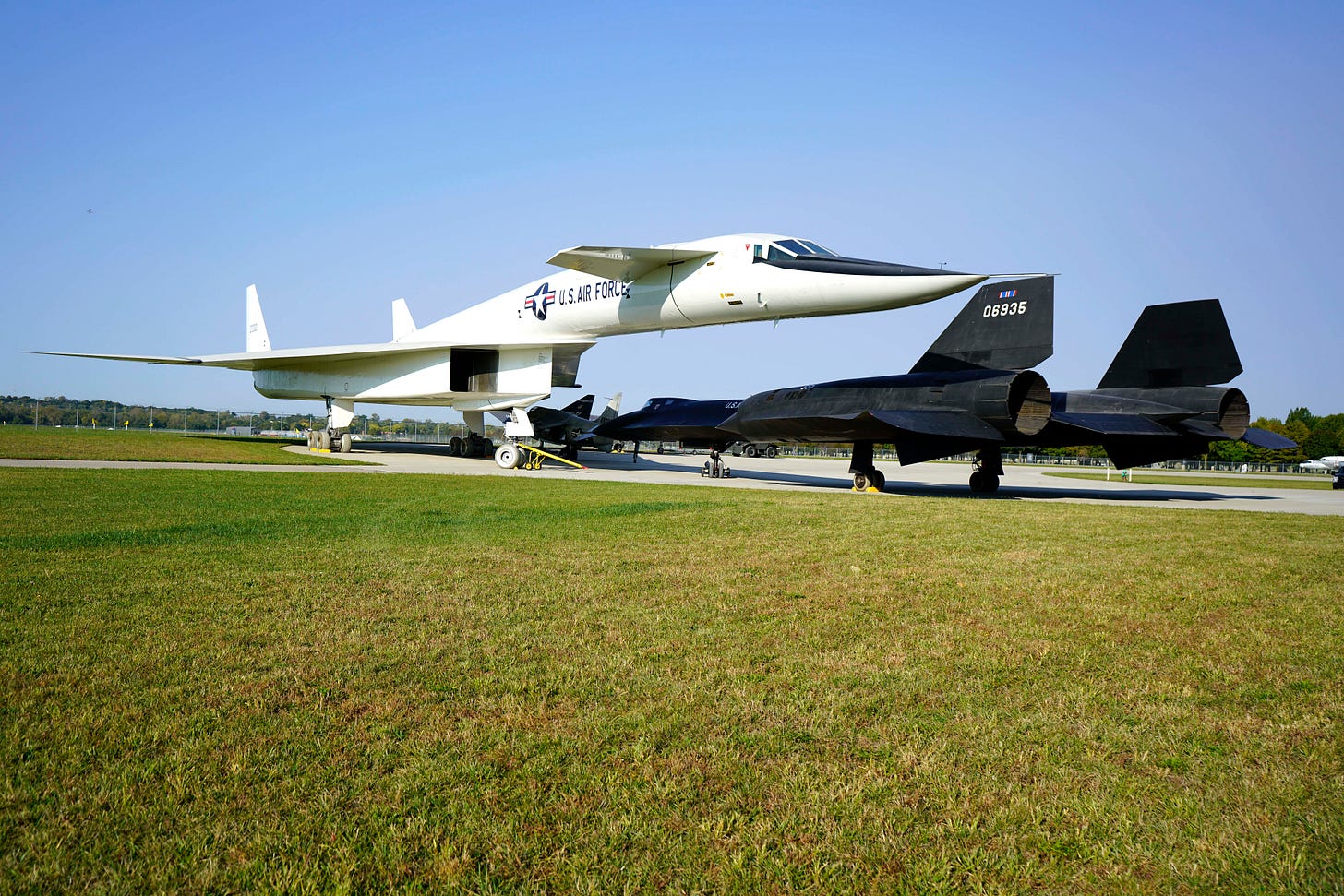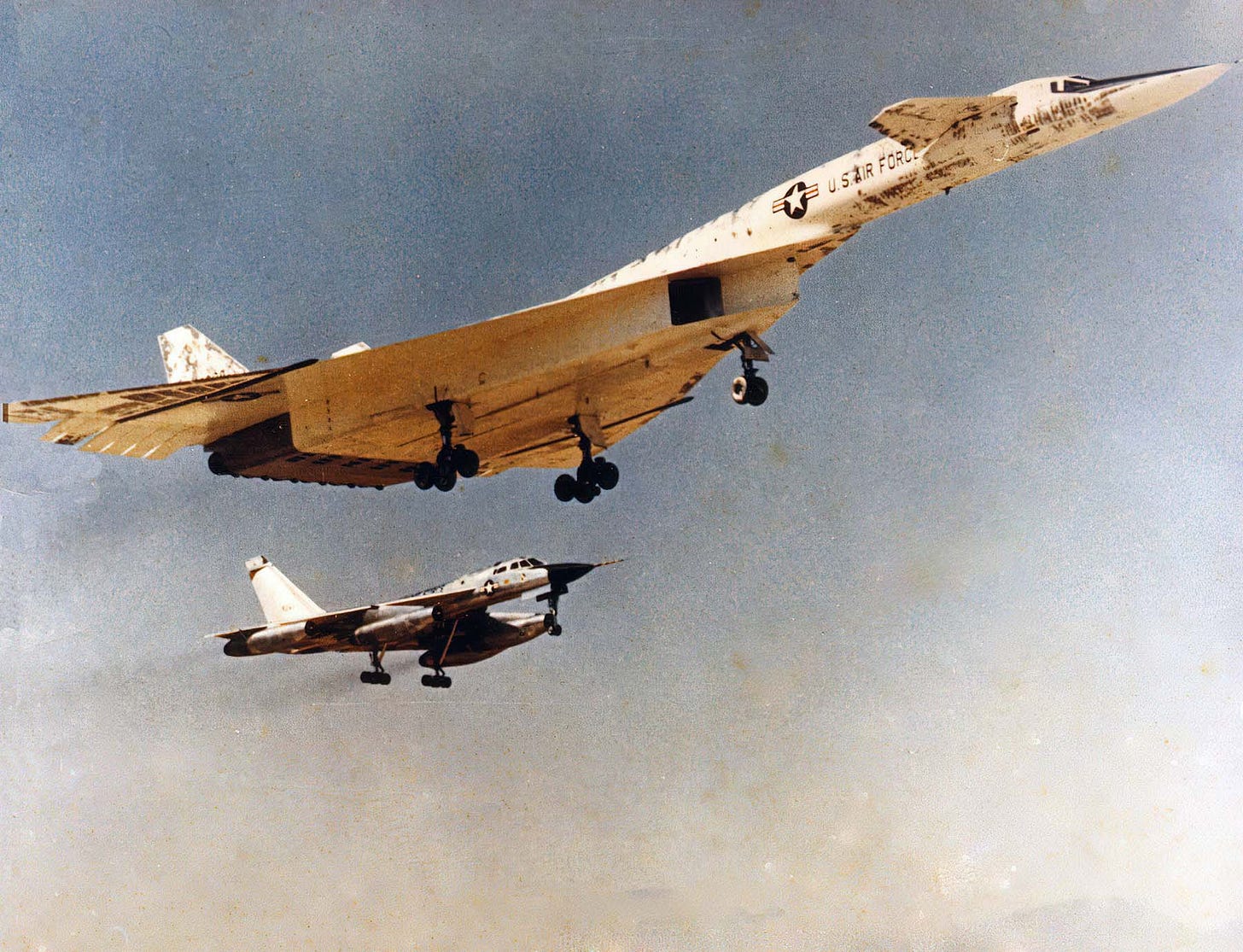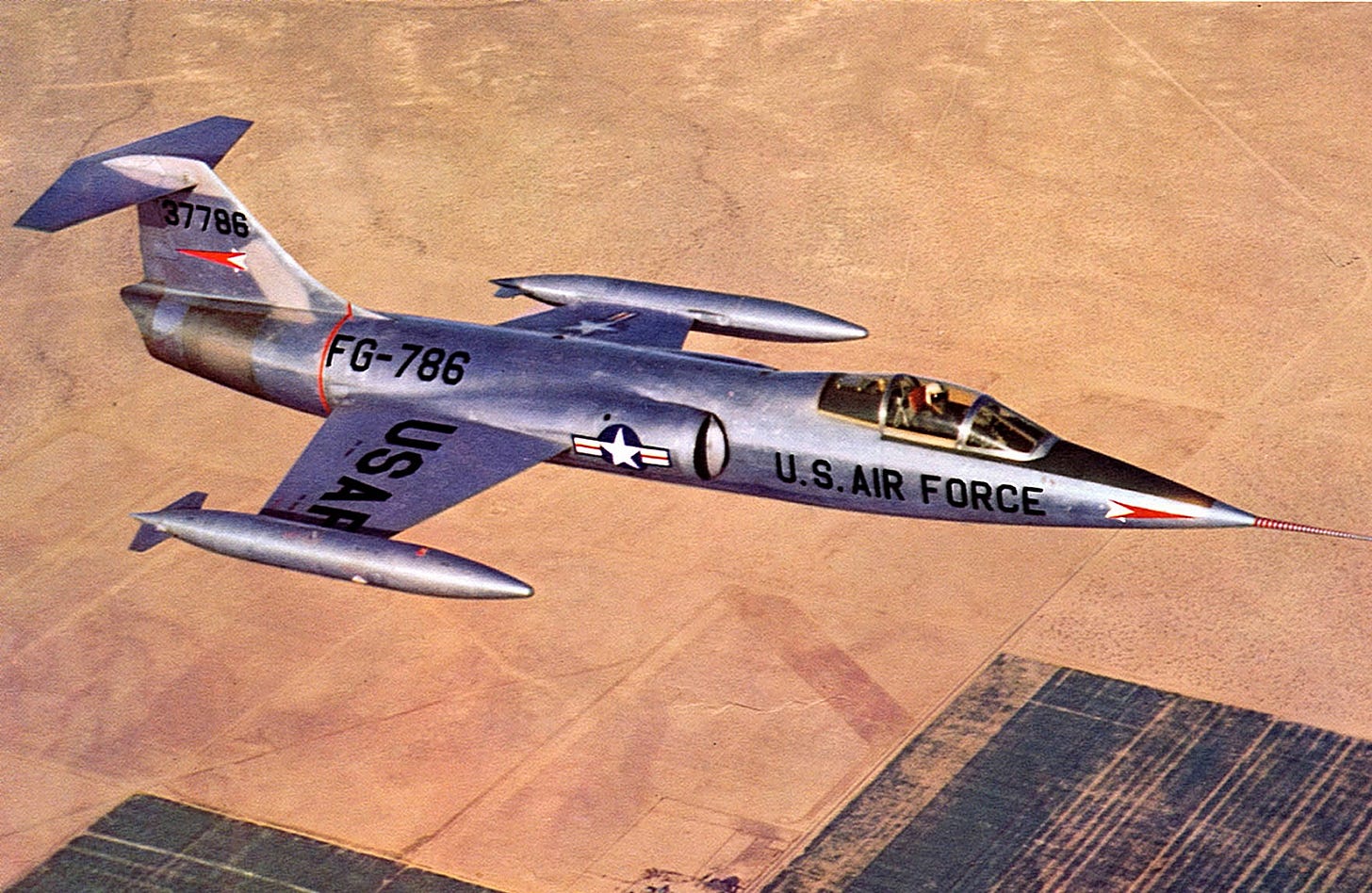Autonomous plane?
Okay, I gotta say I find this somewhat scary.
US Air Force Successfully Launches Autonomous Plane Powered Completely By Artificial Intelligence
Gee, what could POSSIBLY go wrong here? But now let’s get to my REAL reason for posting this.
“AI will be a critical element to future warfighting and the speed at which we’re going to have to understand the operational picture and make decisions,” said a Brigadier General.
Marking an important breakthrough in the Air Force’s advancement of military technology, the United States Air Force announced that they have successfully completed its first unmanned flight that relied on AI.
On July 25th, “XQ-58A Valkyrie” took flight for three hours at Eglin Air Force Base in Florida. The jet was created in partnership with defense contractor Kratos, according to a company press release.
Okay, stop it, just STOP IT RIGHT THERE. Call me old-fashioned, call me a grouchy old fart, I don’t care; for my money, there will only ever be ONE Valkyrie, and it ain’t no “XQ-58A.” That would be the lissome, beautiful XB70, dammit.
The North American Aviation XB-70 Valkyrie was the prototype version of the planned B-70 nuclear-armed, deep-penetration supersonic strategic bomber for the United States Air Force Strategic Air Command. Designed in the late 1950s by North American Aviation (NAA), the six-engined Valkyrie was capable of cruising for thousands of miles at Mach 3+ while flying at 70,000 feet (21,000 m).
At these speeds, it was expected that the B-70 would be practically immune to interceptor aircraft, the only effective weapon against bomber aircraft at the time. The bomber would spend only a brief time over a particular radar station, flying out of its range before the controllers could position their fighters in a suitable location for an interception. Its high speed made the aircraft difficult to see on radar displays and its high-altitude and high-speed capabilities could not be matched by any contemporaneous Soviet interceptor or fighter aircraft.
The introduction of the first Soviet surface-to-air missiles in the late 1950s put the near-invulnerability of the B-70 in doubt. In response, the United States Air Force (USAF) began flying its missions at low level, where the missile radar's line of sight was limited by terrain. In this low-level penetration role, the B-70 offered little additional performance over the B-52 it was meant to replace, while being far more expensive with shorter range. Other alternate missions were proposed, but these were of limited scope. With the advent of intercontinental ballistic missiles (ICBMs) during the late 1950s, crewed nuclear bombers were increasingly seen as obsolete.
The USAF eventually gave up fighting for its production and the B-70 program was canceled in 1961. Development was then turned over to a research program to study the effects of long-duration high-speed flight. As a result, two prototype aircraft, designated XB-70A, were built; these aircraft were used for supersonic test-flights during 1964–69. In 1966, one prototype crashed after colliding with a smaller aircraft while flying in close formation; the remaining Valkyrie bomber is in the National Museum of the United States Air Force near Dayton, Ohio.
I especially like this bit, from the USAF Museum website:
Paint flaked off XB-70 AV-1 during its early flights. North American solved the problem by repainting AV-1 with a thinner coat.
Heh. There’s always a work-around, if only one can find the danged thing. I DID mention the Valkyrie was a gorgeous aircraft, right?
Next, we have a Val at rest next to her speed-demon little sister, the SR71 Blackbird:
Piss-poor quality on this next pic, but it features the Val in flight with another speedster I always really liked, so we’ll all just have to put up with it.
The little ‘un is Convair's B58 Hustler, the world’s first Mach 2-capable bomber, a real looker in her own right. And while we’re doing early-jet-age beauty just for beauty’s sake, have yourself a gander at the Lockheed F104 Starfighter, a/k/a “the Needle,” or “the missile with a man in it."
Unlike the Val and the Hustler, the Starfighter was the only one of these lovely ladies to see wide deployment, in a broad variety of roles other than its original air-superiority-fighter mission. As it happens, it represented something of a departure from the established pattern of bigger and more complex jets:
After a series of interviews with Korean War fighter pilots in 1951, Kelly Johnson, then lead designer at Lockheed, opted to reverse the trend of ever-larger and more complex fighters to produce a simple, lightweight aircraft with maximum altitude and climb performance. On 4 March 1954, the Lockheed XF-104 took to the skies for the first time, and on 26 February 1958, the production fighter was activated by the USAF. Just a few months later, it was pressed into action during the Second Taiwan Strait Crisis, when it was deployed as a deterrent to Chinese MiG-15 and MiG-17 fighters. Problems with the General Electric J79 engine and a preference for fighters with longer ranges and heavier payloads meant its service with the USAF was short-lived, though it was reactivated for service during the Berlin Crisis of 1961 and the Vietnam War, when it flew more than 5,000 combat sorties.
While its time with the USAF was brief, the Starfighter found much more lasting success with other NATO and allied nations. In October 1958, West Germany selected the F-104 as its primary fighter aircraft. Canada soon followed, along with the Netherlands, Belgium, Japan, and Italy. The European nations formed a construction consortium that was the largest international manufacturing program in history to that point, though the Starfighter's export success was marred in 1975 by the discovery of bribe payments made by Lockheed to many foreign military and political figures for securing purchase contracts.
The Starfighter eventually flew with fifteen air forces, but its poor safety record, especially in Luftwaffe service, brought it substantial criticism. The Germans lost 292 of 916 aircraft and 116 pilots from 1961 to 1989, its high accident rate earning it the nickname Witwenmacher ("widowmaker") from the German public. The final production version, the F-104S, was an all-weather interceptor built by Aeritalia for the Italian Air Force. It was retired from active service in 2004, though several F-104s remain in civilian operation with Florida-based Starfighters Inc.
The Starfighter featured a radical design, with thin, stubby wings attached farther back on the fuselage than most contemporary aircraft. The wing provided excellent supersonic and high-speed, low-altitude performance, but also poor turning capability and high landing speeds. It was the first production aircraft to achieve Mach 2, and the first aircraft to reach an altitude of 100,000 ft (30,000 m) after taking off under its own power. The Starfighter established world records for airspeed, altitude, and time-to-climb in 1958, becoming the first aircraft to hold all three simultaneously. It was also the first aircraft to be equipped with the M61 Vulcan autocannon.
The diminutive Starfighter was conceived and built as a replacement for North American's F100 Super Sabre, shouldering it roughly aside before the F100 had even had its maiden flight. The Super Sabre was itself the successor aircraft to the famed F86 Sabre, America’s very first swept-wing fighter and quite a pretty l’il gal her own badass self.
And what a badass she was, too, eventually turning the tide against the once-invincible MiG 15 over Korea to close out the conflict police action war with a convincing 10:1 kill ratio. So successful was the F86, in fact, that it remains the most-produced Western jet fighter by a hefty margin, at nearly 10,000 units built all told.
Hey, what can I tell ya, I’m a traditionalist when it comes to the old military-aviation iron. Don’t hate me ‘cause I’m beautiful, y’all.






